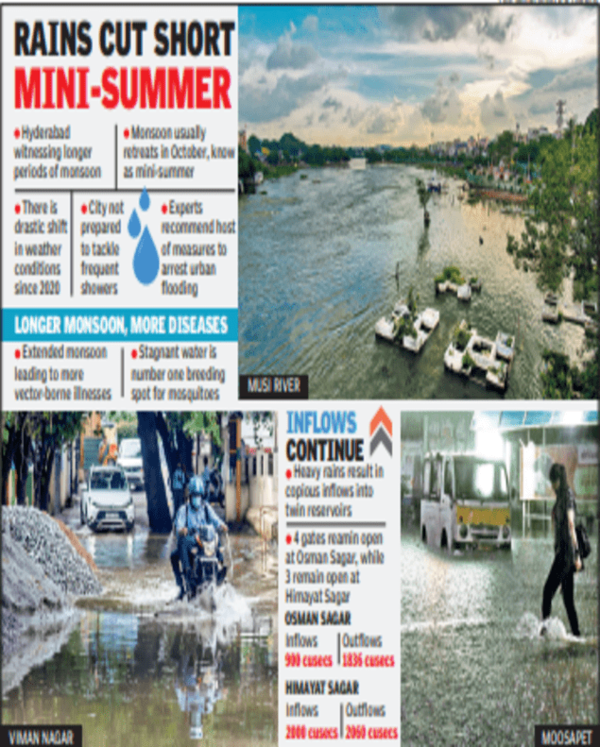But is the city prepared to tackle frequent showers? Possibly not, say experts recommending a host of measures that Hyderabad needs to take to arrest urban flooding.

To begin with, a map of all drains in the city needs to be prepared with details of how much rainfall each drain can handle. “So, if a drain in Madhapur is found to be able to take in only 4cm to 5cm of rainfall, the monsoon team must head there in advance and issue an alert to the public.
They should have have a plan ready to manage the water flow,” said Donthi Narasimha Reddya public policy expert from the city. He added how a crucial factor being ignored, while building drains at present, is that concrete adds to speed of flowing water.
“Hence, we need to build bigger drains and canals in places there was a natural canal before,” Narasimha Reddy suggested. Former director general of the Indian Meteorological Department (IMD), KJ Rameshstressed the importance of basic preparedness – desilting of drains after every spell of rain and not just before monsoon – along with enhancing the capacity of storm water drains.
According to him, monsoon, henceforth, will be a six-month event as against four-month event stretching from June to November. “Hyderabad must be prepared for a minimum of 5cm of rainfall in one hour, at any time. This is likely to occur every other month, maybe even multiple times in a day right from June till November. All our systems must be geared to handle it,” said Ramesh.
And these ‘systems’ must include more skilled staff, restoration of nalas and technical fixtures for gauging the situation quickly, add experts.
“The GHMC needs a proper monsoon team that has people from a geological background, structural architecture and water engineers. Currently what we see is clerical staff and casual labourers rushing to waterlogging and flooding sites with no expert who understands the terrain. These teams must prepare local action plans beforehand and be at high-risk locations to alert the public,” said Narasimha Reddy.
Environmentalist Purushotham Reddy, on the other hand, said how restoration of water bodies was the only solution to protect the city. “Our analysis shows Old City is most susceptible to flooding. Unless the government removes the encroachments from ‘Firangi nala’, Old City will keep flooding.
The situation will remain precarious with Musi flowing in between,” he added while demanding the installation of pressure-gauges across nalas that pass through lakes. This, he said, will help to quickly identify when the water flow is increasing in any lake accordingly alert citizens living around it.





